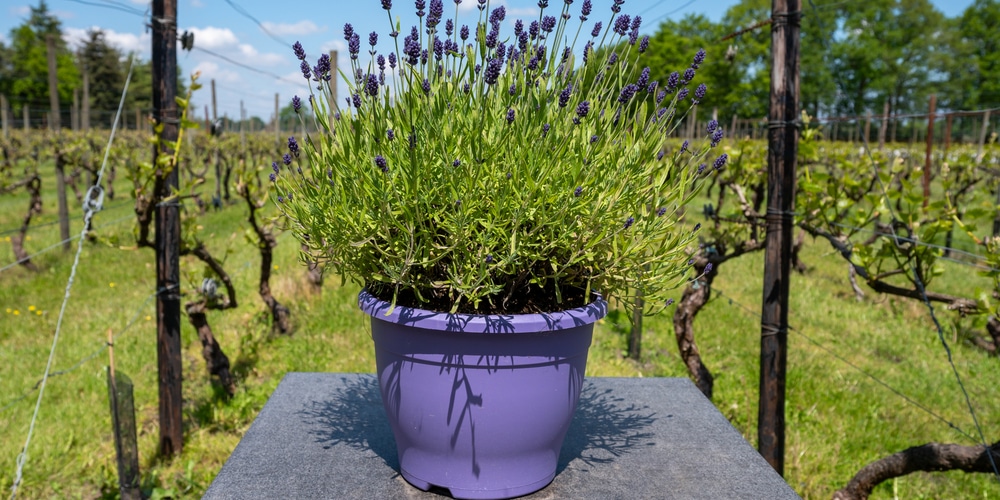Lavender is a relatively low-maintenance herb if you plant it under adequate conditions. Native to the Mediterranean, this plant prefers hot and dry climates.
So, you might expect it not to do very well in humid Georgia. However, with suitable attention, you’ll be able to grow it even in this region. Of course, you might have to take some measures to reduce the negative impact of humidity.
Adding sand and developing a proper watering schedule will help. Also, knowing when to plant lavender in Georgia will make a considerable difference in the establishment of your herb in your garden.
Keep reading to learn about planting lavender in Georgia (and more). Here you’ll find all the information you need to know to make the most out of this herb in this Southern State.
When to Plant Lavender in Georgia
Planting your lavender at the right time of the year will help it better establish itself in your yard, making it stronger and less susceptible to diseases and infections.
These herbs will not survive frost or temperatures below 40°F. So, planting them too early might cause them to die prematurely. Still, doing it too late might not give you a harvest before the first fall frost.
You should always check your local weather before making a decision. After all, the climate can change from one year to the next. And basing everything on predictions is not ideal: checking your local weather is essential.
Plant your lavender around two weeks after the last spring frost. Depending on where in the state you live, that might change. However, you can expect it to be around mid to end of March.
So, planting your lavender the second week of April is (usually) the best decision you can make. Of course, don’t forget to check your local weather!
Sometimes, you might plant your lavender outdoor, and a sudden frost arrives. In that case, bring your plants inside if you planted them in containers. Alternatively, cover them with burlap: with the ideal protection, your lavender might survive.
But what else should you know about growing lavender in Georgia? Jump to the following sections to learn about our favorite recommendations.
How to Grow Lavender in Georgia
Growing lavender in Georgia might require you to take a couple of measures, but it isn’t anything too complicated. For starters, lavender thrives in alkaline soils. Georgia’s substrate is slightly acidic.
Carry out a soil test in your garden and make the amendments necessary to prepare your yard and make it more suitable for growing lavender. For instance, you can add lime to increase the pH.
Because of the high levels of rain in Georgia, you’ll have to pay attention to the substrate you use. Lavender doesn’t like wet feet and is susceptible to root rot. Improve drainage by adding sand to your soil.
If you prefer growing your herbs in containers, consider bringing them indoors when you expect heavy rainfall.
Don’t forget that plants tend to be more demanding when in containers. You might have to add a layer of mulch to increase water retention around your lavender.
Placing your plant in a sunny location is crucial to avoid several fungal infections. Also, prune your plant at least once a year to ensure adequate airflow and reduce the appearance of pests.
Watering your Lavender
Lavender does not need much water. This plant is not a heavy feeder and will do best will less rather than more. The problem with growing this herb in Georgia is the high humidity levels. Always feel the soil before adding any extra moisture: if it isn’t dry, wait for a couple of days more.
Your plant will need water once a week after planting. However, once established, its water needs will be drastically lower. Indeed, lavender will survive even short periods of drought if necessary.
And Georgia‘s humidity means that you’ll probably have to water your plant only sparingly. Don’t forget that thorough watering is better than scarce. While the frequency might lower, you should deeply water your lavender to increase absorption.
If you planted your lavender in a pot, ensure the container has adequate drainage holes. You don’t want it to retain too much water, as it might cause rotting.
Related Article: How Far Apart to Plant Lavender

